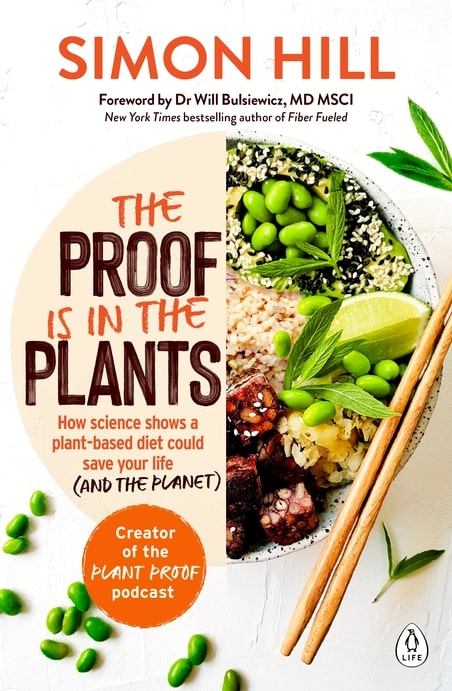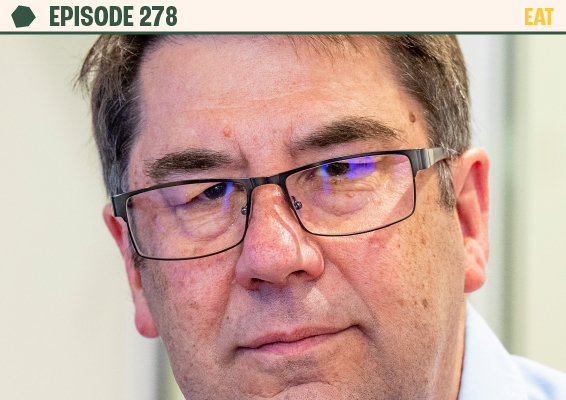Zone 2 training has gained significant attention in recent years, with many people trying to integrate this incredibly beneficial type of exercise into their routines. But how do you know when you’re in Zone 2, and what are the mechanisms and benefits of this type of training? In Episode #277, I’m joined by Dr Inigo San Millan to clarify these questions and delve into the cardiometabolic science that makes Zone 2 training truly noteworthy.
“It’s incredibly inspiring to see that you can get the metabolic fitness of someone in their thirties when you’re 65. It’s attainable for those ones who can afford the time.”
With an illustrious career spanning twenty-seven years, Dr Inigo San Millan is a leading applied exercise physiologist and sports medicine advisor. He’s consulted for an array of professional teams and athletes globally, across multiple sports and organisations, including the US Olympic Committee and the International Cycling Union. Dr San Millan has been at the forefront of developing innovative methodologies in areas such as physiological and metabolic assessment, mitochondrial function, and nutrition.
“With thousands of tests that I’ve done, this is what I saw constantly – that [Zone 2] was the intensity that improved mitochondrial function the most, and also I saw that this was the intensity that improved performance the most.”
A faculty member at the University of Colorado in the departments of Medicine, Human Physiology, and Nutrition, he applies his expertise beyond the athletic sphere to address metabolic rehabilitation in individuals suffering from chronic diseases like cardiometabolic diseases and type 2 diabetes. Renowned as a frequent speaker at global conferences, Dr San Millan brings an unparalleled depth of knowledge on metabolic health, making him an ideal guest to elucidate the science behind Zone 2 training.
“It’s important when you prescribe exercise… to really identify training zones. Because however you exercise, the intensity that you exercise [at] is going to stimulate one pathway significantly more than the other.”
Learn about the intricacies of Zone 2 training as we break down complex topics into digestible insights that you can apply to your own fitness journey. Dr San Millan provides a clear roadmap for understanding how energy is produced at various training zones, emphasising the unique benefits of Zone 2 and how to harness them for longevity.
You’ll also learn about the importance of goal setting when choosing your exercise intensity, and how this links to the development of a robust aerobic base – key to improving your metabolic flexibility and overall health. Dr San Millan offers expert guidance on recognising when you’re in Zone 2, giving concrete directions for how to train effectively within this zone.
Specifically, we discuss:
- Introduction (00:00)
- Understanding Metabolic Health (2:21)
- Metabolic Health Among Elite Athletes: Exploring the Perfection of Studying (6:40)
- Metabolic Health, Mitochondria, and Nutrition (8:00)
- Defining ‘Metabolise’ (14:41)
- Exploring Metabolic Flexibility (18:33)
- Determining the Causes of Mitochondrial Dysfunction (21:01)
- The Role of Oxygen in Energy Production Mechanisms (24:44)
- Comprehending Energy Zones (28:07)
- Energy Metabolism Mechanisms: Glucose vs. Fat (40:27)
- Zone 2’s Optimal Stimulation of Mitochondria (45:29)
- Lactate’s Impact on Mitochondria: Unraveling the Effects (50:46)
- Managing Lactate Levels: Strategies Employed by Athletes (59:37)
- Establishing an Aerobic Base (1:15:13)
- Inducing Mitochondrial Stimulation Through Zone 2 Training (1:17:31)
- Strategies for Enhancing Mitochondrial Count (1:19:27)
- Carbohydrates’ Influence on Metabolic Health (1:29:26)
- Metabolic Health in Sedentary Lifestyles: Understanding the Impact (1:31:04)
- Zone 2 Demystified: Unveiling Its Significance (1:37:59)
- Recognizing Zone 2: How to Identify Your State (1:39:57)
- Monitoring ATP Production Fuel via Specialized Devices (1:49:12)
- Zone 2’s Role in Fat Loss: Separating Fact from Fiction (1:53:49)
- Optimizing Zone 2 Intensity for Maximum Results (1:59:59)
- Weekly Zone 2 Prescription for Robust Mitochondrial Health (2:07:24)
- Effective Modalities for Zone 2 Training: Making Informed Choices (2:11:50)
- Resistance Training’s Integration within Zone 2 Regimen (2:18:11)
- The Optimal Timing for Zone 2 Training: Navigating the Day (2:20:29)
- Supplements and Their Relevance to Zone 2 (2:26:17)
- Summarizing the Essence of Zone 2 (2:35:06)
- Amplifying Training Benefits: Embracing Zones 3 and 4 (2:38:17)
- Outro (2:40:04)
This episode combines theory with a hands-on approach, arming you with both the knowledge and tools to elevate your metabolic and cardiovascular health. Whether you’re a seasoned athlete or someone just starting on your fitness journey, Dr San Millan’s insights are invaluable for anyone aiming to improve their performance or quality of life through evidence-based exercise.
Connect with Dr Inigo San Millan on Instagram and Twitter/X. If you’d like to listen to the episode with Dr Herman Pontzer that we mentioned in this conversation, you can do so here.
Optimise your health with InsideTracker’s biomarker analysis. Get exclusive access to InsideTracker’s new ApoB test, and a significant discount at insidetracker.com/simon.
The best way to support the show is to use the products and services offered by our sponsors. To check them out and enjoy great savings, visit theproof.com/friends.
Enjoy, friends.
Simon
More about Dr Inigo San Millan
Over the past twenty-seven years, I have been working as an applied exercise physiologist and sports medicine advisor to many professional teams and athletes worldwide. My portfolio spans a range of sports, including cycling, soccer, football, basketball, hockey, rowing, swimming, triathlon, University athletics, track and field, running, and gymnastics. I’ve also collaborated with esteemed organizations like the US Olympic Committee, the International Cycling Union, US Cycling, US Rowing, US Swimming, and US Triathlon.
I have been a pioneer in developing new methodologies in various fields of athletic performance. My work covers physiological and metabolic assessment, protocols to assess mitochondrial function, nutrition, glycogen measurement, recovery, overtraining, blood analysis, metabolomics, and muscle damage monitoring and prevention. Throughout my career, I have focused on understanding the metabolic and physiological response to exercise at both the elite level and the cellular and mitochondrial levels.
My primary passion lies in applying the insights I’ve gained from working with elite athletes to broader populations. These include individuals with various chronic diseases such as cardiometabolic conditions, insulin resistance, metabolic syndrome, type 2 diabetes, cancer, and ICU patients. The notion of “Metabolic Rehabilitation” is something I’ve coined to describe this application.
World-class athletes, I believe, possess the most perfect physiology and metabolism known in humans. This perspective informs my philosophy that to understand imperfection, one must first understand perfection. Working with these elite athletes has enriched my comprehension of what ‘perfection’ entails at the physiological and metabolic levels.
In addition to my work with athletes, I have invested significant time in researching cellular metabolism, particularly in the realms of cancer metabolism and mitochondrial function. I’ve utilized state-of-the-art methodologies to examine the cellular responses in athletes, regular individuals, and those with chronic diseases like type 2 diabetes or cancer.
Currently, I serve on the faculty at the University of Colorado, in the departments of Medicine as well as Human Physiology and Nutrition. My research and clinical interests span sports performance, metabolic health, exercise metabolism, cancer metabolism, nutrition, diabetes, and critical care.
As a scholar, I frequently speak at global conferences and events in the fields of sports performance, metabolic health, type 2 diabetes, cancer metabolism, and exercise prescription.
Supporting studies
- Assessment of Metabolic Flexibility by Means of Measuring Blood Lactate, Fat, and Carbohydrate Oxidation Responses to Exercise in Professional Endurance Athletes and Less-Fit Individuals • PMID: 28623613
- Fuel selection in human skeletal muscle in insulin resistance: a reexamination • PMID: 10905472
- Intermuscular adipose tissue directly modulates skeletal muscle insulin sensitivity in humans • PMID: 30620635
- Skeletal muscle energy metabolism during exercise • PMID: 32747792
- Skeletal muscle fatty acid metabolism in association with insulin resistance, obesity, and weight loss • PMID: 10600804
- Type 2 diabetes and remission: practical management guided by pathophysiology • PMID: 33289165








